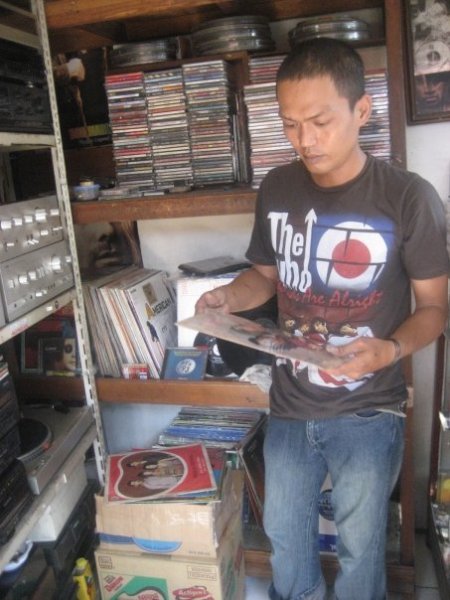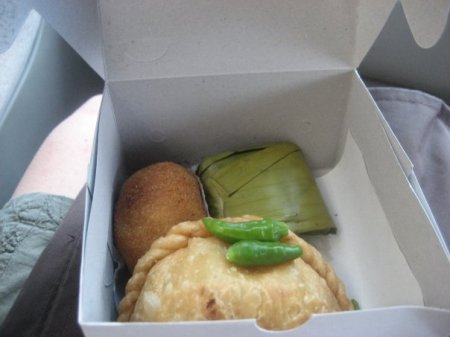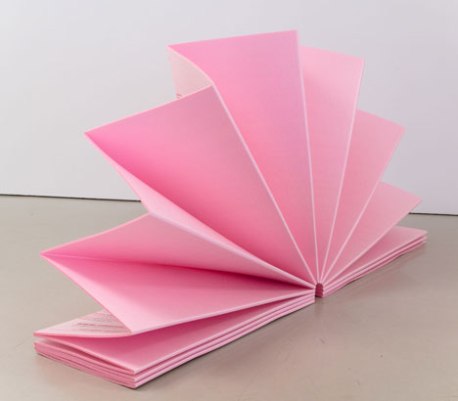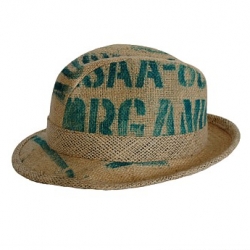This is a post about upcycling old music into new beats. It is long. Skip to the end if you’re only interested in the sounds. There, you will find a free download. For those curious about how this amazing beat came to be, this is the story:
In October, I spent a week in Jakarta for work. The day job, of course, consumed the majority of my time, but I did manage to make the most of my one afternoon off that week while my colleagues were busy working on presentations and setting up meetings for the following day.
“I want to buy records,” I told our Indonesian consultant who, after some clarification that I meant vinyl and not compact discs, instructed the driver to take me to the antique market.

Jakarta antique market
Looking for records while traveling is a hobby I picked up from my friend Flex Unger, whom you may remember as the Brooklyn musician fond of upcycled drum machines. It is also easier said than done, at least in Africa, where I normally go for work. In Lusaka, the only records I could find were a newly released Whitney Houston album on sale at the mall and the vinyl glued to the door of a local radio station. I was on my way to that radio station on the last day of my trip—thinking I could track down the DJs responsible for the decor and ask them where to find records—when I noticed a huge curl of smoke in the air above the center of downtown. We tuned the radio to the station we were on our way to visit and got nothing but static. The station had caught fire, taking the entire building down in flames.
In Lagos, when my friends and colleagues failed to lead me to the records, I dragged several of them out to Fela Kuti‘s Shrine, the famous nightclub run by his son, Femi Kuti. There, we spent the afternoon drinking beers amidst the schwag fumes of the local Rastas, but got no closer to locating the Lagosian record trade. I tried once again to no avail last month in Kampala, where my Ugandan radio friend insists you can’t even buy a record player (though he has promised to help track down local collectors).
Digging for records in Indonesia was much easier than in Africa. Almost too easy. After a mere half hour in local traffic, the car pulled up to a row of the fanciest outdoor market stalls I have ever seen. In fact, they weren’t outdoor at all, but a pint-sized strip mall of shops selling colonial era furniture and Indonesian knickknacks. They even had doors. One of those shops sold nothing but records. I couldn’t believe it. I passed some time there, limiting my search to Indonesian music instead of my regular preference of R&B instrumentals since I only had a couple hours to spend at the market. After the mini-shop, I walked through the less built-up side of the market—open-air stalls selling greasy appliance parts and random chotchkies. There, I found two more record sellers, one of whom even had a turntable set up. I asked him to play me the records I had just purchased and bought one more from him, just to be polite. In the end this is what I took home:

Finds from Jakarta
Three Indonesian pop albulms from the 1960s and 70s and one two-disc traditional compilation full of old opera and gamelan music. My favorite—both for the cover and what’s actually on the record—is the center album above. It’s called (in Indonesian) Andrianie Beladjar Sepeda, which my Indonesian friend (the one who helped me find the antique market in the first place, THANKS IWU!!!) told me means Learning to Ride a Bike. It’s got a kind of Gainsbourg/Bardot feel, excellent sounds to blog to.
All told, I spent $1.20 on that shopping spree: Twenty cents each for the three pop records, forty cents on the double album of traditional music and twenty cents on a lovely lunch of fritters, samosa and a banana dessert cooked in banana leaves.

Not pictured, one croquette already consumed
Though I mentioned to Flex Unger that I had picked up some records in Indonesia and even sought his advice on the purchase of a portable record player to enjoy them in Brooklyn, I never showed him these albums or brought them to his studio. My great and fruitless musical safari through Zambia, Nigeria and Uganda had carried with it the specific mission of finding African music that he might enjoy or be able to sample. Before I left on each of those trips, Flex specifically asked me look for music for him. But when I went looking for music in Jakarta, it wasn’t as much to run home to impress my DJ friend as it was to seek out personal souvenirs of a fascinating trip.
As it turns out, impressing my DJ friend happened anyway. A couple weeks ago, Flex was over at my apartment and spotted the alluring cover of Learning to Ride a Bike. “What are these??” he cried, sifting through the small stack of Jakarta finds. Since then we have spent some hours at his studio in Sunset Park transferring the records to electronic format, breaking up the fun and strange songs into smaller pieces and feeding them into Flex’ drum machine to mix and match the noises and layer them with new ones. Or rather, he has done all of that while I have looked on, pressing the occasional button on the soundboard when instructed to do so. It feels like I’ve learned something while observing the process—a vague something about timing, Pro Tools, hip hop and Southeast Asia.
More importantly, the end results have been fantastic. Check out the first finished beat. It is entitled “Steamed Bananas” after that tasty Indonesian snack and because Flex is working on a larger, super-market-themed album for which all beats must have food names. Consider this a sneak peak.
“Steamed Bananas” mixed by DJ Flex Unger
Kind of makes you want to dance, doesn’t it? For comparison, here is the original track from Learning to Ride a Bike.
“Kedjam” from the album Andrianie Deladjar Sepeda sung by Eddy & Siam
Impressive, non? Check out Flex’ label Black Rhombus for more fun tunes. And send us your stories of upcyled music and musical upcycling. I’m all about musical trash posts this summer, especially since I just figured out how to upload mp3s.
Also, this whole process has renewed my entusiasm for figuring out where they hide the records in Africa. Stay tuned. And speaking of African music, Brooklynites mark your calendars for June 25th and seek me out in Prospect Park!





















